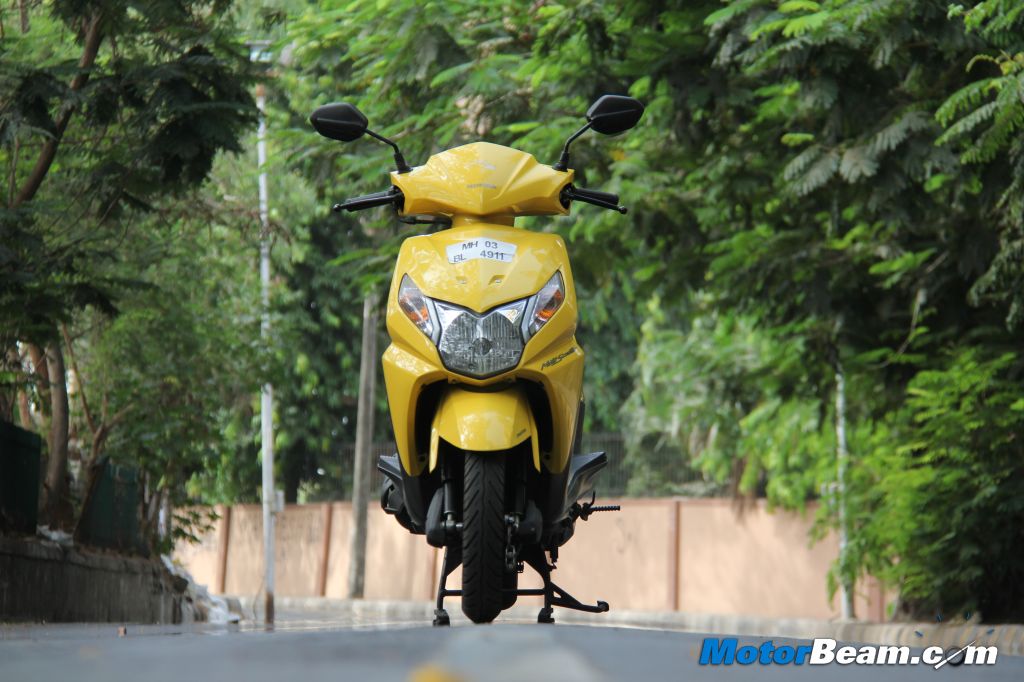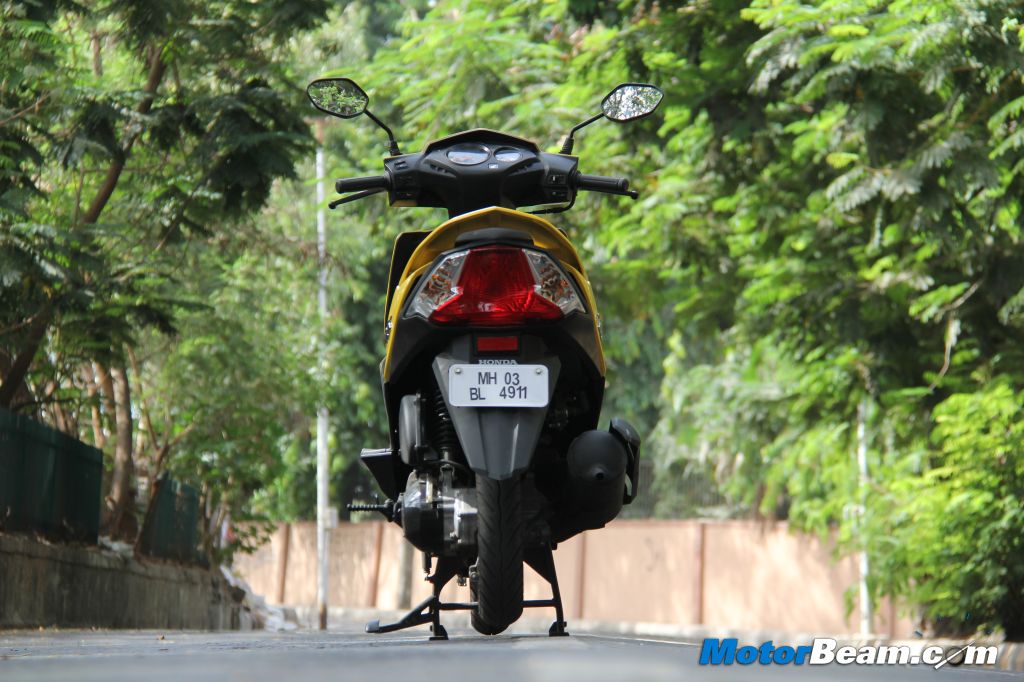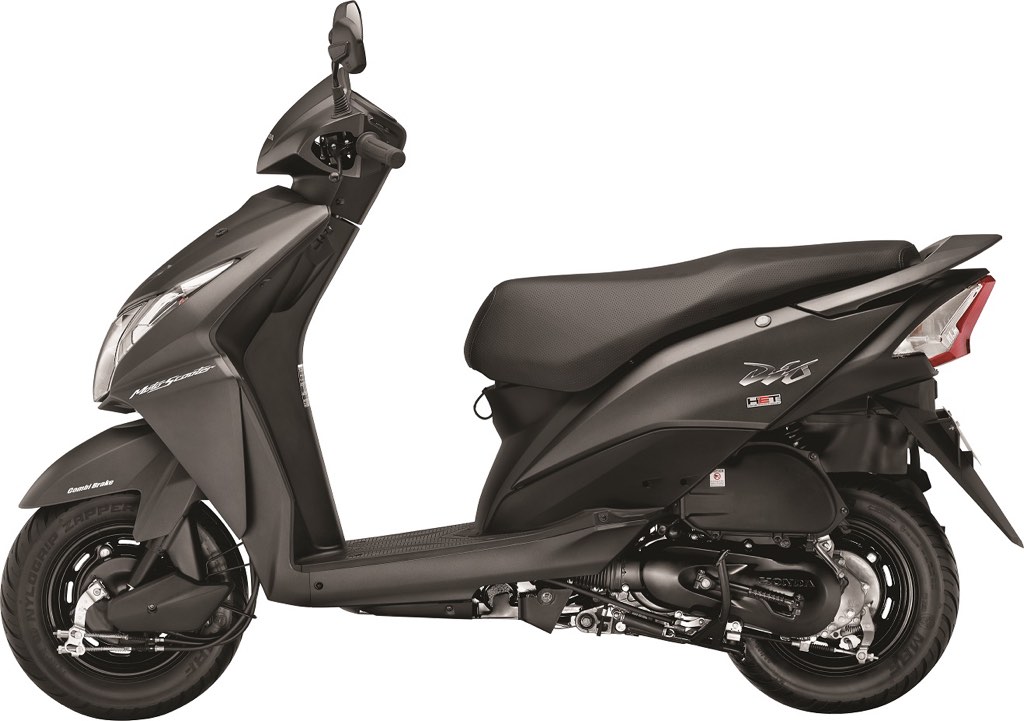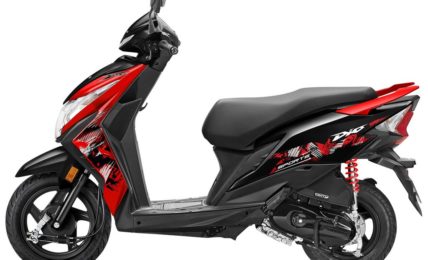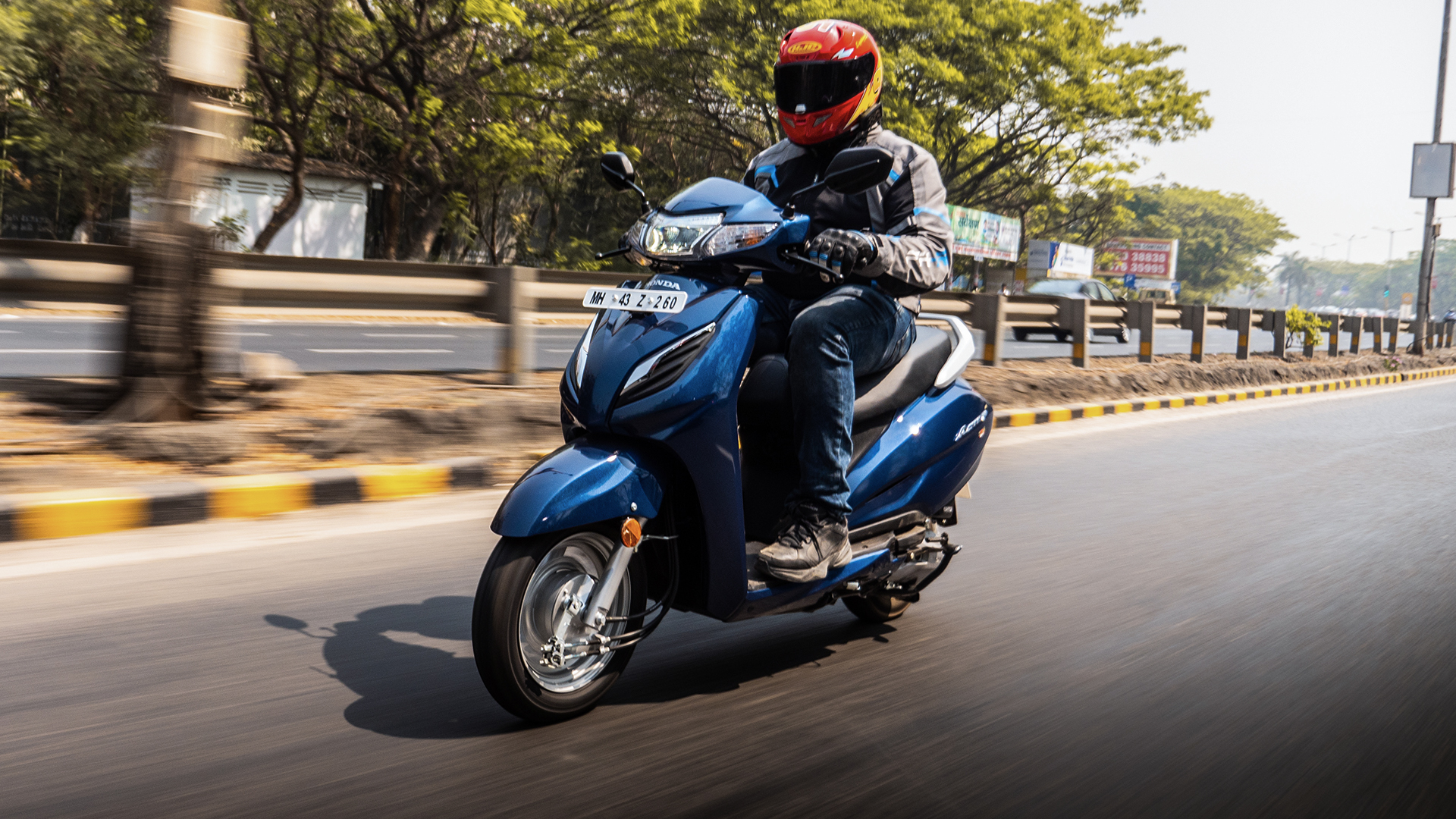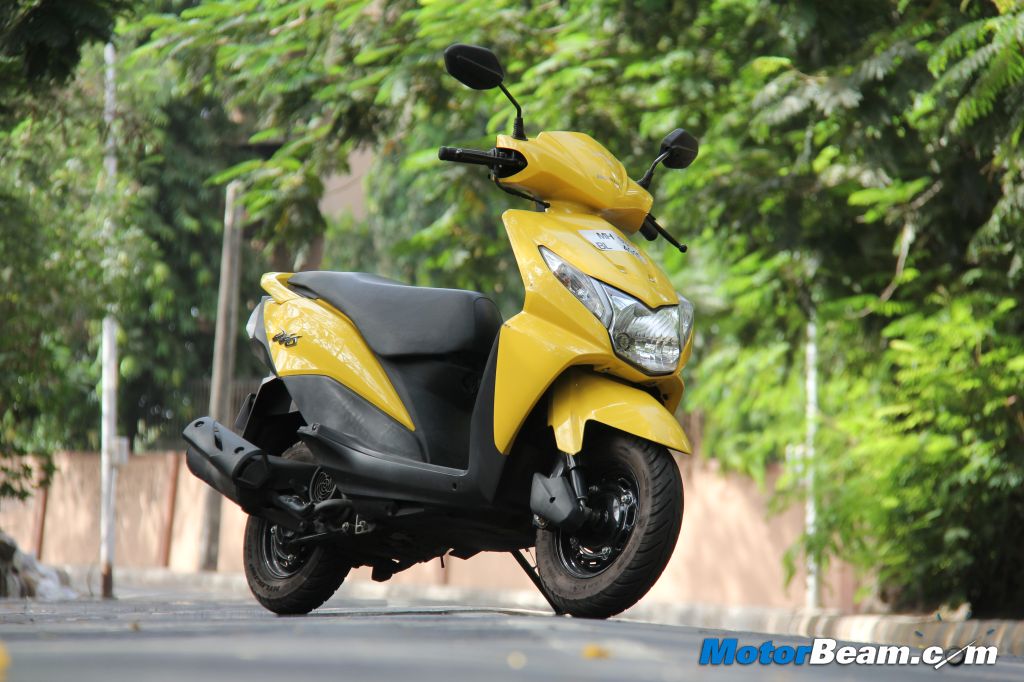
Honda Dio Long Term
Bike Tested: 2013 Honda Dio HET
Kms Done: 876 kms
Test Started at: 920 kms
Test Concluded at: 1796 kms
Fuel Cost: Rs. 1752/-
Liters: 23.06
Mileage: 38 km/l (combined), 52.7 km/l (best), 28 km/l (worst)
Rs. per km: Rs. 2.00/-
Service Cost: Nil/-
The Honda Dio is a funky scooter for the youth, now with improved mileage.
Honda Motorcycle and Scooters India (HMSI) has been primarily known for two successful products in India. The Honda Unicorn is a motorcycle that came with various upgrades over the years capturing the 150cc market with its robust build quality. However, now it is so old that it has younger sportier siblings too. The second and most important product was the line of scooters. It all started with the Activa in the year 2000. A 102cc engine with a metal body and a unisex design ruled the market for 9 years in a row. Then in 2001, the Honda Dio spawned. The same Activa engine, with fibre body and sporty styling made it an instant hit among the youth.
Talk about success and Honda will be the one that has endless stories to tell. By 2009 the entire scooter lineup received the much-deserved upgrade to engine design and fuel economy. Year 2012 was the year when Honda again remapped the engines with its new technology from their R&D centre in India and came up with Honda Eco Technology (HET). It is the same 109cc engine but a whole load of upgrades made it entirely new. When we tested them, we were thoroughly impressed with its better power delivery, a much more refined intake and exhaust note. We decided to take the Honda Dio for a longer test to see how it fares on various aspects that our roads throw at it.
[flickr size=”center” float=”medium”]http://www.flickr.com/photos/motorbeam/9166994282/[/flickr]
The Honda Dio carries a youthful and sporty design language. Sharp lines, edgy panels, fixed large headlight and compact dimensions complete the funky look of the scooter. The black wheels, suspension and glossy black finish on the gearbox casing add to the sportiness and gels perfectly on the Dio. The large headlight provides excellent illumination and spread. However, since it has a fixed head light, it only moves when you change direction completely.
[flickr size=”center” float=”medium”]http://www.flickr.com/photos/motorbeam/9166997008/[/flickr]
The instrument cluster was completely revised on the 2012 Honda Dio and it remains the same on the HET version. The textured plastic with round dials look great. The dials lit up when the parking lamps are on, a neat touch. The huge indicators look good and provide humongous amount of illumination too. The fuel gauge has a story to tell. The fuel gauge is small on the instrument cluster. So when it indicates that there is absolute zero fuel, you rush to the petrol pump to only find out that there is one litre of petrol left! This is fine where many state rules are applied, but in a country like ours where every petrol drop counts, not a good idea! Suggestion? Make the fuel gauge dial bigger, simple!
[flickr size=”center” float=”medium”]http://www.flickr.com/photos/motorbeam/9166996760/[/flickr]
The riding position is of a typical scooter. It is wide, you sit upright and seats are well cushioned and have good width for “big” riders as well. Things are not good for the pillion on the other hand. The elongated footboard saves on the pillion footrest on both sides and forces the pillion to place their feet far away, which is near to the rider, which is extremely uncomfortable for the pillion on long journeys. Moreover, since the grab rail at the rear is not raised, it is a stretch as well. Honda has used the power of ergonomics to gain a bit of dough from customers. This problem can be easily solved if you buy the body protection guard which has footrest in-built on it.
[flickr size=”center” float=”medium”]http://www.flickr.com/photos/motorbeam/9164769171/[/flickr]
The ride quality of the Dio is not as plush as the Activa. It is on the stiffer side since it has less weight, the springs have been stiffened up and results are not so good for the pillion. At the rear, the pillion will complain and miss the plush ride quality that is associated with scooters. The front feels overly light but stays in control while changing direction quickly or riding enthusiastically. The Dio corners well with good poise and there is as much fun as the TVS Wego or Yamaha Ray. Credit goes to the tyres, which provide good grip. High speed stability is good and there is minimal windblast. There is a downside in the city. The wide front end does interfere when you navigate through really tight spaces while most motorcycles and scooters can easily navigate. On the Dio, it is bit of a pain to check every time whether the wide front end is touching.
[flickr size=”center” float=”medium”]http://www.flickr.com/photos/motorbeam/9166992728/[/flickr]
Coming to engine, the 109cc, 8 BHP and 8 Nm of torque engine has always offered good driveability in city and on the highway. The 104 kgs kerb weight makes the Honda Dio get off quickly. The gearbox does not shift up to 50 km/hr and when it does, there is a lot of punch that drags you all the way to 80 km/hr quickly. Top speed is 92 km/hr, which takes time to reach after touching 80 km/hr. The Dio is comfortable in highway riding, you can hold motorcycle speeds like 70 km/hr all day long. Albeit, the fuel economy drops to 38 km/l. During our test period, we got 45.8 km/l in the city and 52.7 km/l on the highway. All these figures were a result of tank to tank method and wide open throttle most of the time. We did one complete highway run of 80 kms and did 85-90 km/hr all day long non-stop and the Honda engine was absolutely stress free. The engine heated up in the end of the journey. However, that was bound to happen and the result was the economy dropping to 28 km/l. Surprisingly, that is a figure which any performance bike in the country would give you, if you maintained the Dio near its top speed all day long.
[flickr size=”center” float=”medium”]http://www.flickr.com/photos/motorbeam/9164771409/[/flickr]
Previously Honda engines would not idle and morning starts would be a pain. We did cold starts and the scooter din’t have any hiccups or issues with starting. When the scooter was left untouched for a couple of days, still it started in one click. Despite no starting problems, we did use the choke once and left it on while riding as well. If this was an old generation scooter, it would not notify. However, the new Dio notifies you when your choke is on. Once you drive around 30 km/hr with the choke on, it will not let you accelerate further. Quality is good all around and there are no gaps or fit-finish issues. Paint job seems a lot better than old scooters.
[flickr size=”center” float=”medium”]http://www.flickr.com/photos/motorbeam/9164769007/[/flickr]
The Honda Dio very much depicts what is meant to be. With the dynamics, peppy engine, aesthetics and price tag, it is aimed at the youth with flamboyant colors and funky styling. It is cheaper by not a huge margin because of the essentials it lacks. There are few shortcomings with the Dio, which are bearable, but just not expected from Honda. The HET version has done its job though. Improved fuel economy and a much more refined engine at a fraction of a cost over the old generation model is a steal. There are several options in the category now, but if you like the Honda Dio at first sight, then you should go for it because there is nothing that would make you regret your decision in the future.
Honda Dio Service Costs –
* Air Filter – Rs. 300/-
* Oil – Rs. 268/-
* Brake Shoe – Rs. 220/-
* Spark Plug – Rs. 125/-


